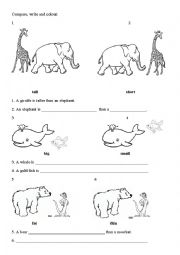

However, consequences of foetal calf growth for subsequent growth, and of foetal and neonatal calf growth for efficiency and carcass- and beef-quality characteristics, are less well understood. Similarly, influences of pre-weaning nutrition, most notably lactational performance of the dam, on growth to market weights of cattle are well characterised (Berge, Reference Berge1991). Growth of the bovine foetus has well-studied consequences for survival (Holland and Odde, Reference Holland and Odde1992) and can be slowed during the latter half of gestation by restricted nutrition and/or inadequate placental development (Bell et al., Reference Bell, Greenwood and Ehrhardt2005). These different growth paths result from factors including climate, soil quality and pasture species, which contribute to variable pasture and nutrient quality and availability. There are numerous growth path possibilities during early and later life that may influence productive characteristics of cattle. This need for further research extends to consequences of nutrition and growth early in life for reproductive capacity. Finally, it should be emphasised that long-term consequences of more specific and/or acute environmental influences during specific stages of embryonic, foetal and neonatal calf development remain to be determined. However, the quality of nutrition during recovery from early life growth retardation may be important in determining the subsequent composition of young, light-weight cattle relative to their heavier counterparts. We propose that within pasture-based production systems for beef cattle, the plasticity of the carcass tissues, particularly of muscle, allows animals that are growth-retarded early in life to attain normal composition at equivalent weights in the long term, albeit at older ages. Furthermore, interactions between genotype and nutrition early in life, studied using offspring of Piedmontese and Wagyu sired cattle, were not evident for any growth, efficiency, carcass, yield and beef-quality parameters. Interactions were not evident between prenatal and pre-weaning growth for subsequent growth, efficiency, carcass, yield and beef-quality characteristics, within our pasture-based production systems. Similarly, bovine myofibre characteristics are little affected in the long term by growth in utero or from birth to weaning. Restricted prenatal and pre-weaning nutrition and growth do not adversely affect measures of beef quality. However, if high energy, concentrate feed is provided following severe growth restriction from birth to weaning, then at equivalent weights post-weaning the slowly-grown, small weaners may be fatter than their well-grown counterparts. At equivalent carcass weights, cattle grown slowly from birth to weaning have carcasses of similar or leaner composition than those grown rapidly.

However, retail yield and carcass composition of low- and high-birth-weight calves are similar at the same carcass weight. Retail yield from cattle severely restricted in growth during pregnancy or from birth to weaning is reduced compared with cattle well grown early in life, when compared at the same age later in life. However, within the limits of beef production systems, neither severely restricted growth in utero nor from birth to weaning influences efficiency of nutrient utilisation later in life. Hence, more extreme intrauterine growth retardation can result in slower growth throughout postnatal life.

Capacity for long-term compensatory growth diminishes as the age of onset of nutritional restriction resulting in prolonged growth retardation declines. Severe, chronic growth retardation of cattle early in life reduces growth potential, resulting in smaller animals at any given age.


 0 kommentar(er)
0 kommentar(er)
